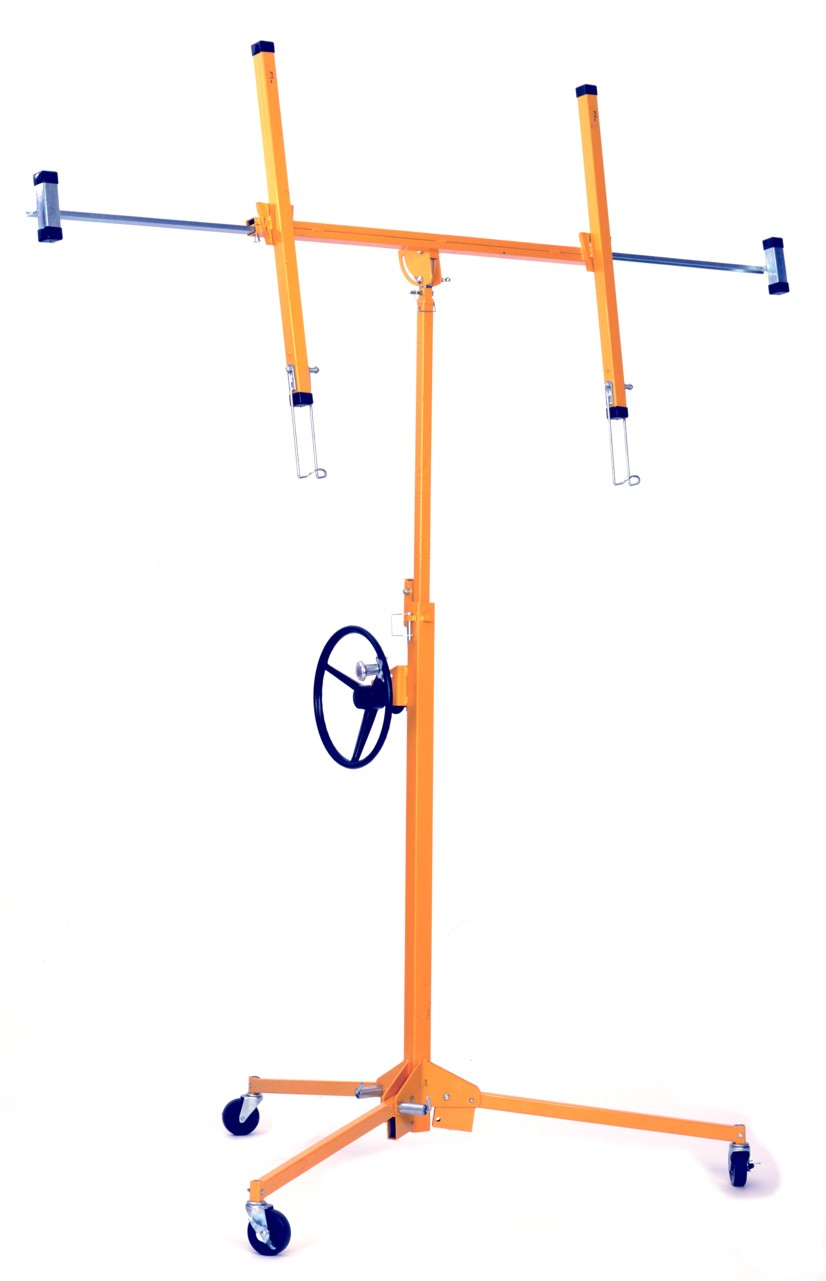
Related devices of drywall lifts (Drywall Panel Hoists)
Keyword:Drywall Lifts Time:2019-3-4 23:09:42
A two-way drywall lift overload protection system is used to reliably prevent overload input force or overload load from rising. Two-way dry hoisting overload protection system usually includes a telescopic dry hoist for lifting and reducing load. The telescopic dry hoist includes a plurality of legs, a downward lifting member, a plurality of telescopic lifting members extending upward from the downward lifting member and an upper support, and a winch connected to the telescopic gypsum board elevator, and connected to the telescopic gypsum board elevator. The brake device of the winch is mechanically connected to the sliding clutch on the telescopic gypsum board elevator to selectively expand the lower lifting member and the plurality of telescopic lifting members, as well as the main elongation member connected between the winch and the sliding clutch.
The invention comprises a lifting device for lifting ceiling panels into place flush against the ceiling beams for installation. The device has a supporting structure for supporting the panel and telescoping sleeves for raising and lowering the panels. The device also has a cable and pulley connecting structure for telescoping the sleeves with a drum or spool for winding the cable and a brake mechanism for the drum. The supporting structure may also be pivoted at an angle and carry thereon panels for installation against the upright wall framework.
The invention includes a panel lifting device, which has at least three telescopic slender segments, which are telescopic to each other, and all the telescopic parts can be telescoped into non-telescopic slender frame members. Three independent chain length segments are not directly linked together to increase and decrease the expansion segment. The upper and lower ends of the first segment are installed at the upper and lower ends of the first expansion segment. The upper end of the second segment is connected with the upper end of the non-telescopic segment, and the lower end is connected with the lower end of the second segment. The upper end of the third segment is connected with the upper end of the first expansion segment, and the lower end is connected with the lower end of the third expansion segment. The non-telescopic part has a gear transmission, and its output gear meshes with the first chain segment to raise and reduce the first chain segment, thereby raising and reducing the first telescopic part. The first expansion segment lifts and lowers the second and third expansion segments simultaneously through a chain link.


- No information
-
1. Design objective of electronic crane scale network management. (1) Adopt advanced distributed data processing techno…
-
Electronic crane scale bearing platform installation to focus Electronic crane scale can be installed generally on the li…


